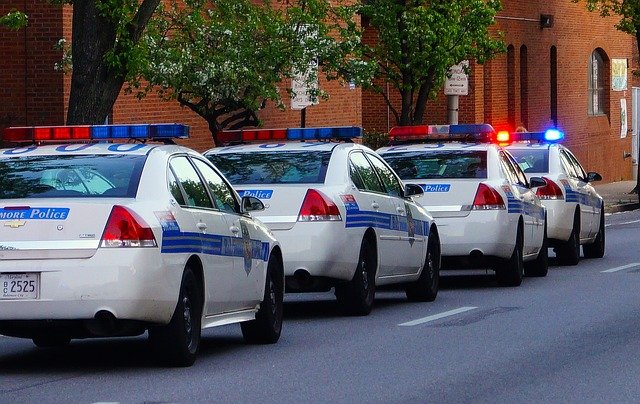In parts of the country, behavioral health organizations are partnering with law enforcement to provide better and more appropriate services to community residents in behavioral health crises. The partnership model could become increasingly popular in the future, presenting new opportunities for behavioral health providers down the line.
These agreements can take various shapes and sizes, but they all have a common goal: to get people in crisis to behavioral health providers sooner, minimizing time spent with law enforcement.
One example is in Amarillo, Texas, where behavioral health case manager Larissa Bernal rides with a police officer 40 hours a week, responding to 911 calls that involve suicide or mental health. She works as part of the Amarillo Police Department’s crisis intervention team, which is composed of four officers and one sergeant.
When Bernal reaches a scene, her officer first makes sure it is safe. Then, she uses behavioral health approaches to deescalate the person and connect them with follow-up care. Although crisis intervention officers are specially trained in handling mental health situations, she’s noticed her partners are still learning.
“They are learning more about the post-crisis part, which decreases the recidivism rate, and community resources — our inpatient hospital, psychiatric providers, counselors, case managers – [and] how we all collaborate to decrease those crisis moments for our clients,” Bernal told Behavioral Health Business.
Her work never stops; beat officers provide steady referrals during weekends and late nights when Bernal and her counterpart aren’t working.
Bernal’s salary is paid in part by the Texas Panhandle Centers, the region’s mental health authority, along with the police department. The job is funded through a grant via Texas HB 13, which set aside funding for community behavioral health initiatives.
The initial expectation was that the program would serve at least 191 people per year. It has already exceeded those expectations: Between Sept. 2019 and Aug. 2020, Bernal and her counterpart helped 392 people, double their goal.
Bernal believes behavioral health organizations nationwide could help exponentially more people through similar partnerships.
“I’m hoping I’m being part of a major change for the U.S. as a whole, to show [that] we are making a difference,” Bernal said. “This is our chance. This could be mainstream.”
Although these police-provider partnerships are showing positive outcomes, they aren’t yet institutionalized en masse. Fragmented silos within the criminal justice and mental health systems are partially to blame.
To be successful, these partnerships require trust and participation from multiple stakeholders, National Council for Behavioral Health President and CEO Chuck Ingoglia said.
“The mental health system, the police department, the prosecutors, the public defenders — all of these different people who touch these systems — have to think that this is worthwhile,” Ingoglia told BHB. “And that’s why this is a lot of relationship management.”
That’s the case in Dalhart, a town of about 12,000 that is also located in the Texas Panhandle. Chief of Police David Conner, who started working in criminal justice in the 90s, recently developed an informal partnership with the behavioral health hospital transfer app XFERALL.
“For years, we would get a call to somebody who is in crisis; we would detain them, … put them in a car, … drive them to a mental hospital and drop them off,” Conner said. “Nobody has figured out what to do with somebody in crisis. So they say, ‘Well, law enforcement is the catch all for everything, let’s just throw the problem at them.’”
That meant his officers would spend hours helping people in crisis, detaining them, taking them to the hospital for assessment and calling around to behavioral health providers in the region to determine if they’d take patients based on their insurance status. The final step was driving patients to inpatient providers up to five hours away.
But a few years ago, Conner starting working with XFERALL, an app that automates finding hospitals, similar to the travel search engine Kayak.com, which helps people find hotels.
Participating behavioral health hospitals tell XFERALL what kind of patients they’ll take, and the app automatically tells a user if there’s an open bed for a potential patient. Instead of Conner’s officers calling around, they now know exactly where to take a patient, thanks to the web-based platform.
This solution doesn’t solve all of Conner’s issues – his officers still have to provide hours of transportation — but it does eliminate some stress. Conner has asked his city council for funds to hire a mental health case manager to help, but he’s received pushback over budget concerns.
Shana Palmieri, chief clinical officer and co-founder of XFERALL, said that’s a common problem. Formal partnerships are often largely underfunded. And even in places where mental health workers ride along with police, there might be only two workers – not enough to respond to every mental health crisis call.
Some states, like Texas, mandate that police receive 40 hours of mental health training. But that doesn’t compare to the schooling and experience behavioral health providers receive.
“You’re sending an untrained person in mental health out to deal with a person who is erratic, psychotic, you know, maybe flinging a weapon around at you,” Palmieri said. “This used to happen to us in the hospital, but we were ready for it.”
Partnerships between law enforcement and behavioral health providers open the door to help patients who need it the most. Plus, they benefit all parties involved and the greater community, according to Palmieri.
“It’s important for the patient care, first of all, but also for how we operate, that we have these collaborative models,” she said. “Because if law enforcement are the people who are interacting … with individuals who are in crisis, those patients need to get to a facility — whether that is a substance abuse facility, whether that is a behavioral health facility, whether that is a hospital. And those partnerships are important.”
Written by Lisa Gillespie
Companies featured in this article:
National Council for Behavioral Health, Texas Panhandle Centers, XFERALL



